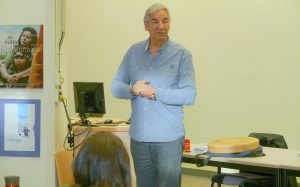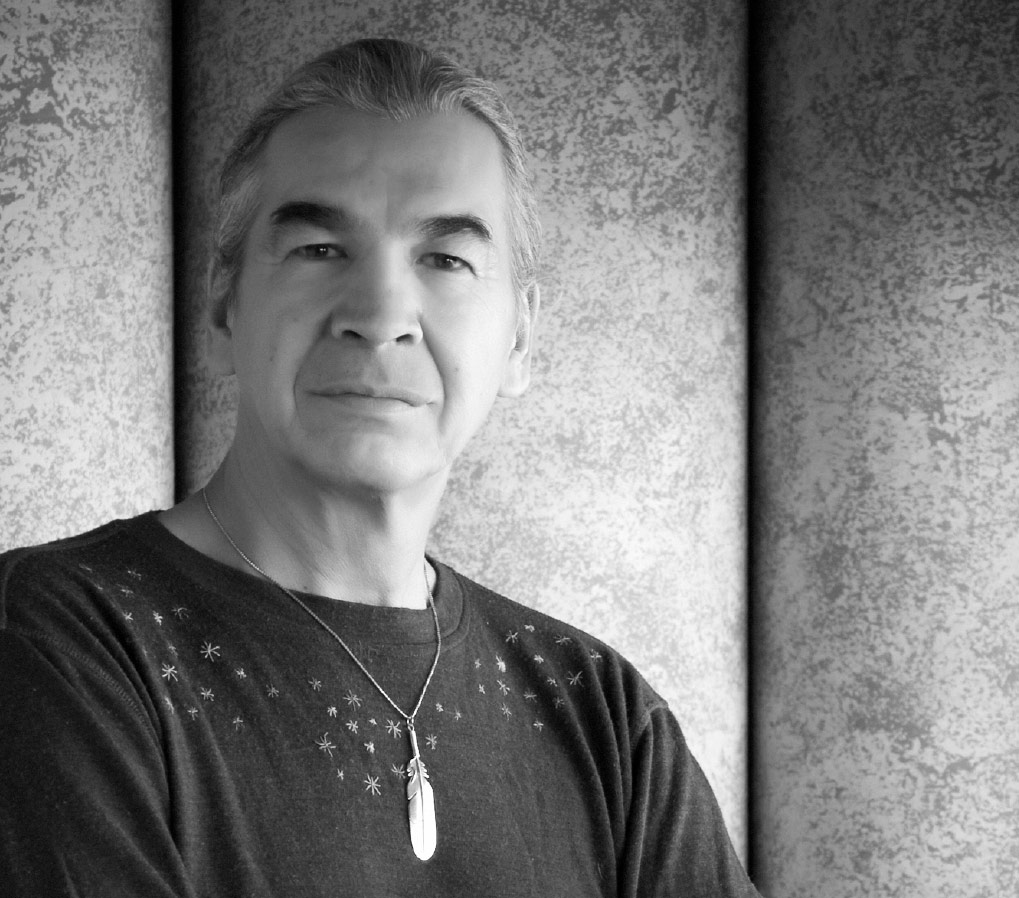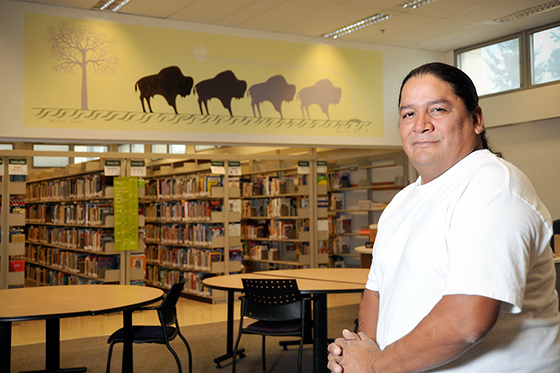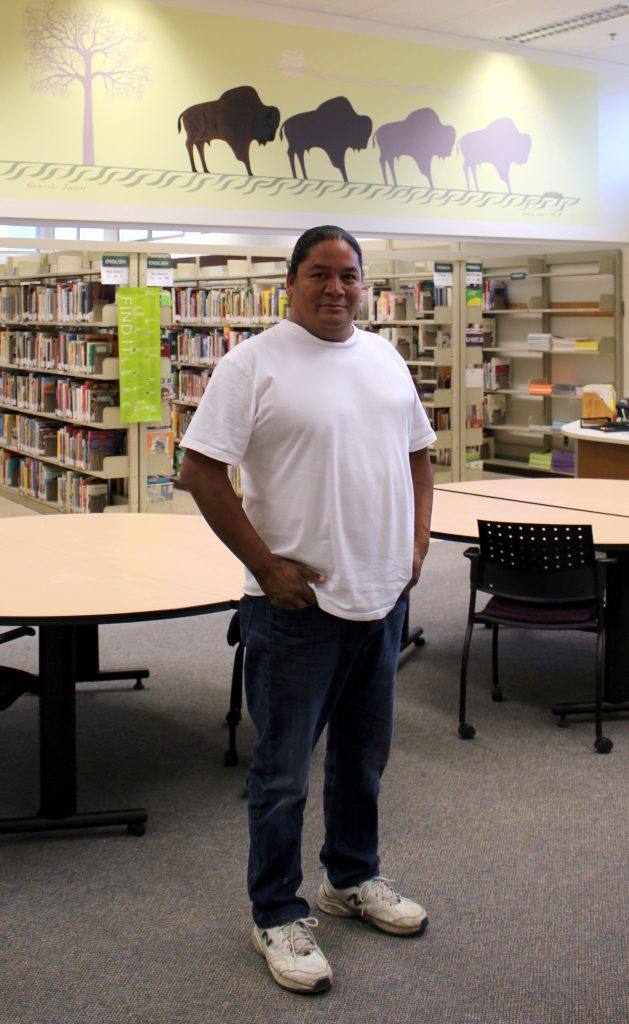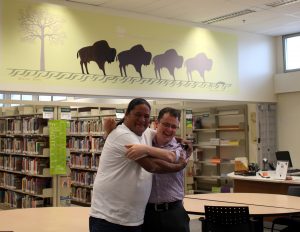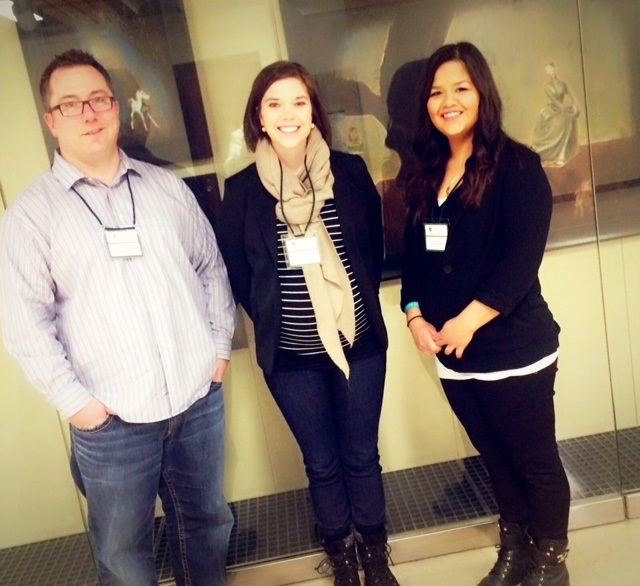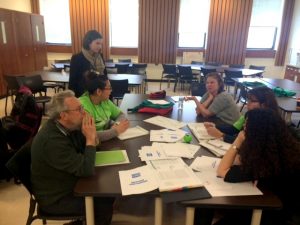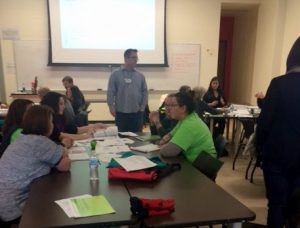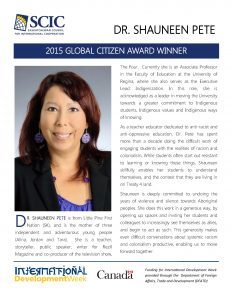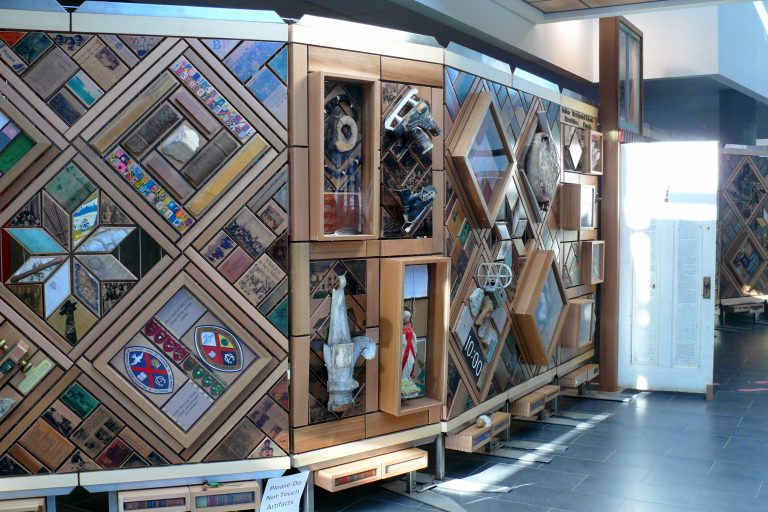By Costa Maragos (Reposted from U of R Feature Stories)
Each time Keith Adolph looks out of his office, he sees a work of art that brightens his day.
It’s a new mural that graces a wall at the Teaching Preparation Centre, a library and work space for education students located on the second floor of the education Building.
“It’s great. It draws me in and invites me to look at it longer,” says Adolph who is the Centre’s coordinator. “It feels like I’ve helped make this space a little more organic. It feels more like a learning space and a place for people to be in.”
The mural, called Spiritual Journey, is the work of Cliff Dubois, an artist from the Pasqua First Nation. Central to the theme are four buffalo, walking on sage, shown to signify various stages of life.
“The buffalo that are walking begin in the physical form and slowly fade, eventually making the journey to the spirit world,” says Dubois whose spiritual name is Strong Wind and is indicated by his trademark tiny tornado sketch in the lower right corner of his works. “At the end of the buffalo is a smudge with smouldering smoke that crosses the sky which represents the universe. The smudge offers purification for the soul.”
The mural became a reality thanks to the enthusiastic support of the Faculty of Education and other members of the campus community. The project was funded by the U of R’s Indigenous Advisory Circle.
Dr. Shauneen Pete, Executive Lead on Indigenization, recommended funding for the project.
“For me this project is very much in support of the Strategic Plan. Indigenizing spaces is about changing the physical spaces and by adding the signage and images,” says Dr. Pete. “This is a good way of realigning Indigenous imagery and making them prominent and normal. I can’t wait to see how our students respond to this image and the discussions it will provoke. I’m really happy with it.”
From the beginning, Adolph envisioned a mural with a First Nations theme.
“We’re on Treaty 4 land and with the Indigenization movement we see on campus, I want to be a part of that,” says Adolph. “I want the students coming into this space to feel they’re being represented.”
The mural is located in Room 228 of the Education Building. Adolph encourages you to drop by for a look.
The Faculty of Education prides itself on being one of the best in Canada and offers exciting opportunities. Please visit us here for more information.
